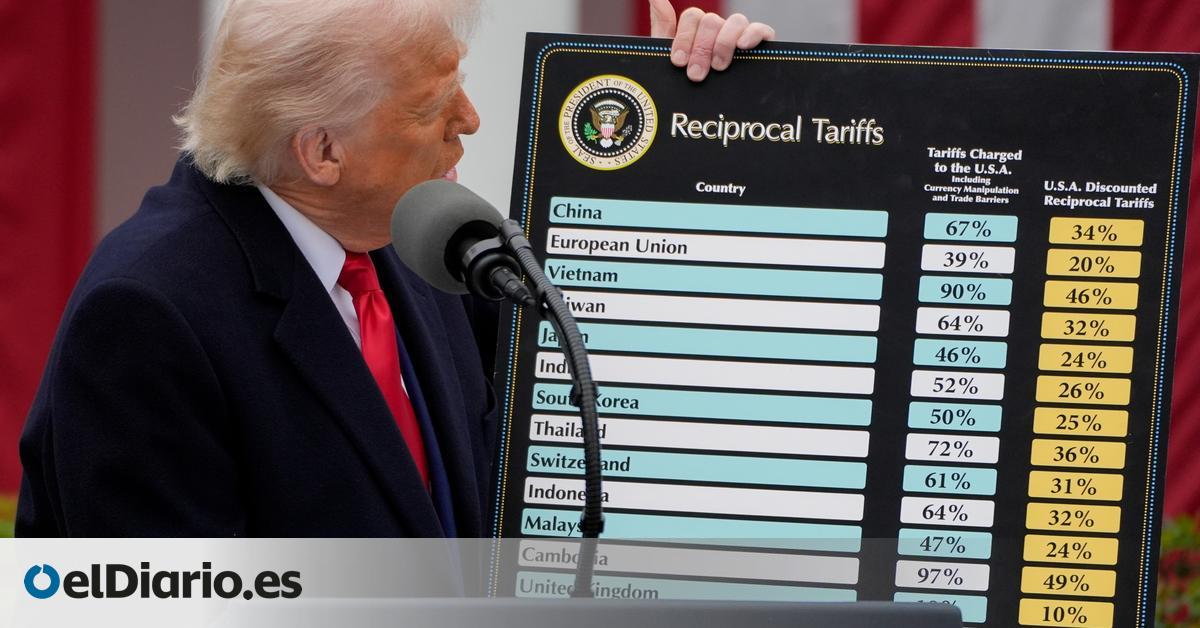
The president of the USA, Donald Trump, announced this Friday a direct 50% tariff on the European Union as of June 1, 2025. This was stated by the US president in his social network.
“The European Union, which was formed with the main purpose of taking advantage of the United States, is very difficult to deal with,” said Trump: “Its powerful commercial barriers, taxes to added value (VAT), sanctions to ridiculous companies, non -tariff barriers, monetary manipulations, unfair and unfounded demands against US companies, among others, have generated a commercial deficit with the United States of 250,000 million dollars a year, a totally unacceptable figure.
And he said: “Therefore, I am proposing the imposition of a direct 50% tariff on the European Union, as of June 1, 2025. No tariff will be applied if the product is manufactured or produced in the United States.”
Trump, later, during a decrees firm in the Oval Office, has insisted: “I have been telling everyone: they have treated us very badly for years. It was created, the European Union, to harm the United States, to take advantage of the United States, and have achieved it. We have a great deficit with them. They sell millions and millions of cars, Mercedes, BMW, Volkswagen and many others. We, basically, have restricted the sale of cars in the European Union, which is not right.
The European commission will not react to Trump’s announcement until the call ends during this Friday afternoon – European time – among the European negotiator, Maros Sefcovic, and the US commercial representative, Jamieson Greer.
Trump’s negotiators are pressing the EU to make unilateral tariff reductions on US products, and warning that without these concessions, there will be no progress to avoid additional tariffs of 20%, As reported on Friday the Financial Times.
The Wall Street bag, meanwhile, opened in red after Trump’s announcement –9.30 New York time, 15.30 Spanish peninsular time. Ten minutes after the bell touch, the Nasdaq technological fell 1.28%, to 18,683 units; The selective S&P 500 fell 1.01%, up to 5,782 integers, and the Dow Jones of Industrials lost 0.9%, up to 41,483 points.
The European Commissioner of Commerce, Maros Sefcovic, is the one who is negotiating – also with his American counterpart, the secretary of Commerce, Howard Lutnick – to seek a commercial agreement, while this policy is community competence.
At the beginning of May, Sefcovic claimed to the US to show “disposition to advance in a fair solution”, although later he was convinced that there may be “results” regarding the “overcapacities” of China, especially in sectors such as steel, which drowns the industries on the two sides of the Atlantic; in the reduction of “dependencies”, as well as in “cooperation in sensitive technologies” or the development of artificial intelligence. “They are the key areas that we are working on,” Sefcovic said after a meeting with the 27 ministers a week ago.
What they take for granted in the community block is that at least a part of the tariffs with which Trump has punished the EU has come to stay. In fact, 25% of steel, aluminum and cars are being applied, as well as 10% of the so -called ‘reciprocal tariff’ while the EU paused the entire response to give a chance to negotiations.
The Minister of Economy, Carlos Body, has been one of those who has publicly assumed that Trump will maintain generalized tariffs to increase the collection: “We will see what that tariff is, but, in any case, we can not only isolate an element, we have to see how the final agreement is balanced and I hope it is a balanced and fair agreement.”
This situation explains that the EU is already preparing for a new phase of the relationship with its first commercial partner by raising a series of “rebalancing” measures that they intend to activate in case there is no agreement to guarantee the same conditions on the field of play.
At the moment, the European Commission has prepared a list of thousands of products for an amount of 95,000 million euros that the 27 and industries will have to analyze to profile the possible reaction to a failure in the negotiations.
Source: www.eldiario.es

